Naval aviation has its place in military operations, shaping the course of history with its strategic reach and technological advancements. Naval Aviation Museums dedicated to this field preserve and showcase the evolution of carrier-based aircraft, maritime patrol planes, and naval air combat. They provide valuable insights into naval strategy and operations by showcasing historic aircraft, immersive exhibits, and archival materials. These institutions also provide an in-depth look into the contributions of naval aviators, engineers, and support personnel. Below is a selection of ten notable Naval Aviation Museums worldwide, highlighting their key exhibits, accessibility, and historical significance.
10 Best Naval Aviation Museums In The World
Here is a list of the top ten Naval Aviation Museums around the world, so that you can add adventure to your next trip:
1. National Naval Aviation Museum, Pensacola

Photo: Richard A. Weaver / Wikimedia Commons
The National Naval Aviation Museum is located in Pensacola and houses over 150 restored aircraft from the U.S. Navy, Marine Corps, and Coast Guard. The collection includes the NC-4 and the Blue Angels flight squadron’s aircraft. Visitors can experience flight simulators, interactive displays, and a Giant Screen Theatre. The museum also features a dedicated section on aircraft carrier operations and naval air combat history, making it one of the best Naval Aviation Museums in the world.
Location: Pensacola, Florida, USA
How To Reach: Accessible via Interstate 10; the nearest airport is Pensacola International Airport
Timings: 9 AM – 5 PM daily
Entry Fee: Free
2. Fleet Air Arm Museum, Yeovilton
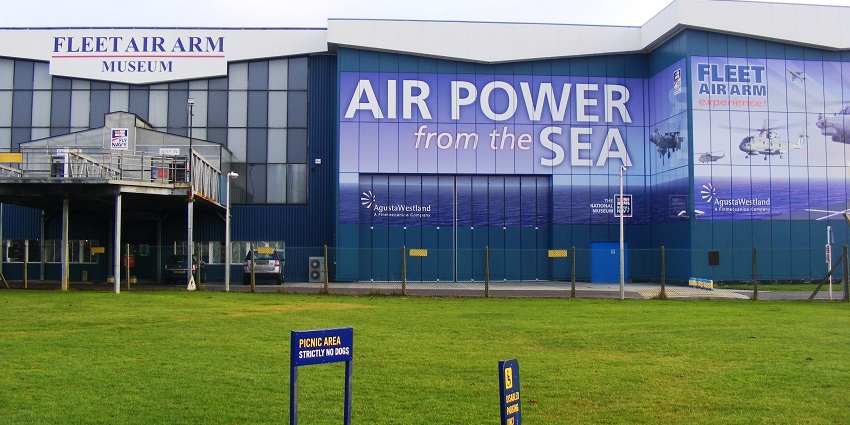
Photo: Rodw / Wikimedia Commons
The Fleet Air Arm Museum in Yeovilton, United Kingdom, holds Europe’s largest collection of naval aircraft. Its exhibits include a Concorde prototype, a Fairey Swordfish biplane, and a Hawker Sea Harrier. A highlight is the aircraft carrier experience, where visitors walk through a simulated hangar and control room of the HMS Ark Royal. The museum also provides a detailed look at the history of British naval aviation and its role in military conflicts around the world.
Location: Yeovilton, Somerset, United Kingdom
How To Reach: Easily accessible by car via the A303; the nearest train station is Yeovil Junction
Timings: 10 AM – 4:30 PM daily
Entry Fee: £16.50 for adults (₹1,650); discounts available for children, seniors, and families
3. Naval Aviation Museum, Goa
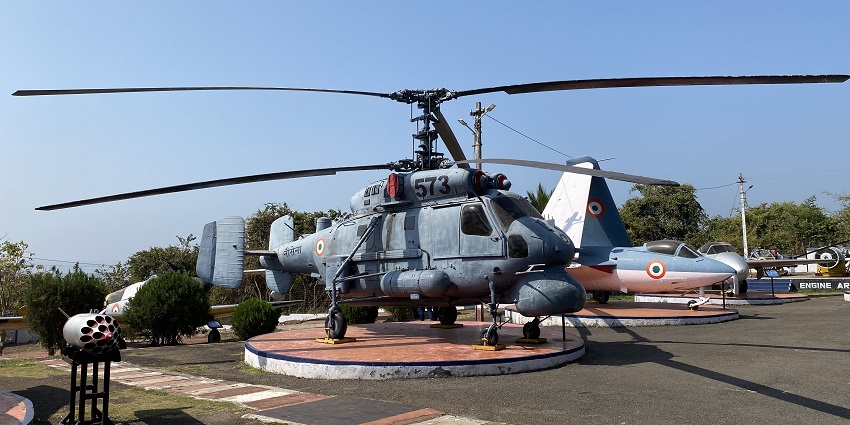
Photo: Vinayaraj / Wikimedia Commons
Located in Goa, India, the Naval Aviation Museum showcases the history of the Indian Navy’s air arm. The outdoor display features decommissioned aircraft like the Sea Harrier, Alize, and Seahawk, while the indoor exhibit provides insights into carrier operations, naval aviation history, and technological advancements. The museum highlights the role of naval aviation in key military operations and its evolution over the decades, making it one of the top Naval Aviation Museums in the world.
Location: Goa, India
How To Reach: Located near Dabolim Airport; accessible by local transport
Timings: 10 AM – 5 PM (Tuesday to Sunday)
Entry Fee: ₹30 for adults; ₹10 for children
4. Estonian Maritime Museum / Lennusadam Seaplane Harbour, Tallinn
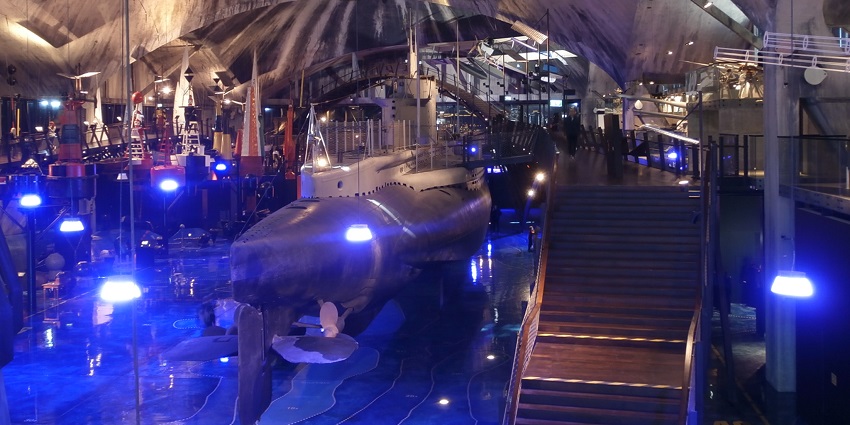
Photo: Pjotr Mahhonin / Wikimedia Commons
The Estonian Maritime Museum in Tallinn is housed in a historic seaplane hangar. It features a collection of seaplanes, naval artifacts, and interactive exhibits on Estonia’s maritime and aviation history. One of its highlights is the replica of the Short 184 seaplane used in reconnaissance missions. The museum also displays Cold War-era military technology and provides a glimpse into Estonia’s coastal defence strategies. A submarine and various naval defence equipment add depth to its exhibits.
Location: Tallinn, Estonia
How To Reach: Accessible by public transport; nearest tram stop is Linnahall
Timings: 10 AM – 6 PM daily
Entry Fee: €15 for adults (₹1,350); discounts available for students, seniors, and families
5. French Naval Aviation Museum / Musée de l’Aéronautique Navale, Rochefort
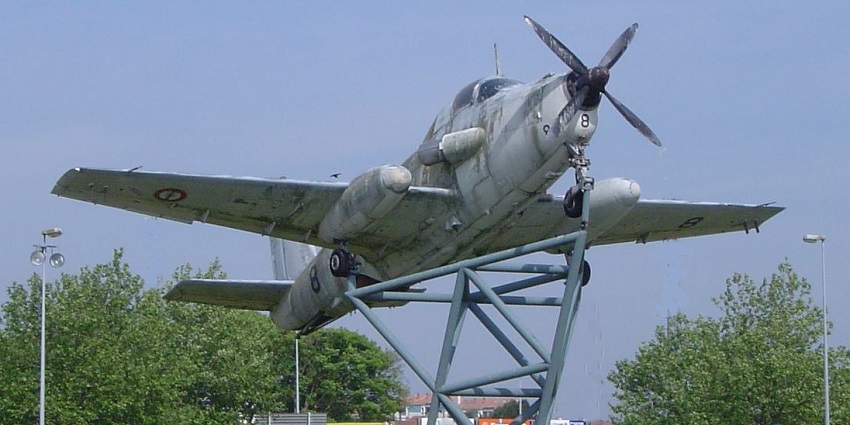
Photo: Jean-Marie Dumont / Wikimedia Commons
The French Naval Aviation Museum in Rochefort preserves the history of France’s naval air fleet. The museum houses Dassault Étendard IV fighter jets, Alouette helicopters, and a range of naval aviation artifacts. Its exhibits include historical records of aircraft carrier operations and the role of French naval aviators in various military campaigns. Visitors can explore detailed displays on technological advancements in naval aviation, making it one of the best Naval Aviation Museums in the world.
Location: Rochefort, France
How To Reach: Accessible by car; nearest train station is Rochefort
Timings: 2 PM – 6 PM ( Wednesday to Sunday )
Entry Fee: €8 for adults (₹720); discounts available for children and groups
6. Swedish Air Force Museum / Flygvapenmuseum, Linköping
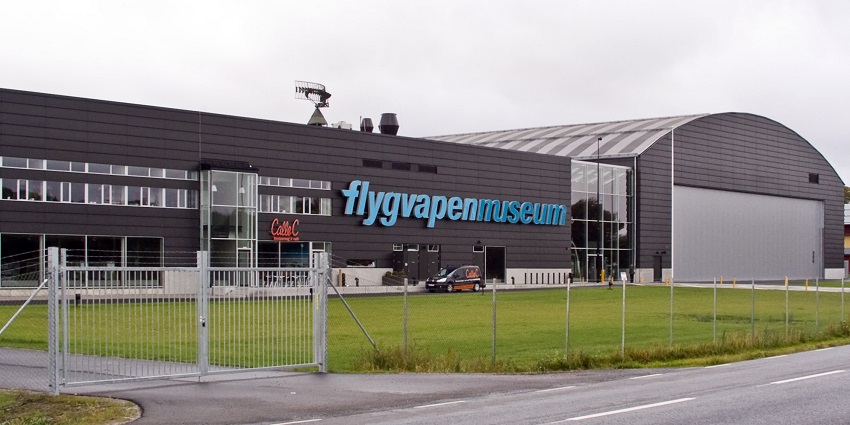
Photo: Xauxa / Wikimedia Commons
The Swedish Air Force Museum in Linköping includes naval aviation exhibits featuring maritime patrol aircraft and seaplanes. It highlights Sweden’s approach to aerial defence, with aircraft such as the Saab B17 and Catalina amphibious plane. A key exhibit is the preserved DC-3, which was shot down during the Cold War. Visitors can explore interactive displays on reconnaissance missions, aircraft carrier operations, and Sweden’s air defence strategies, providing a well-rounded historical perspective.
Location: Linköping, Sweden
How To Reach: Accessible by car and public transport; nearest bus stop is Malmslätt
Timings: 11 AM – 4 PM Tuesday to Sunday
Entry Fee: Free
7. Finnish Aviation Museum, Vantaa
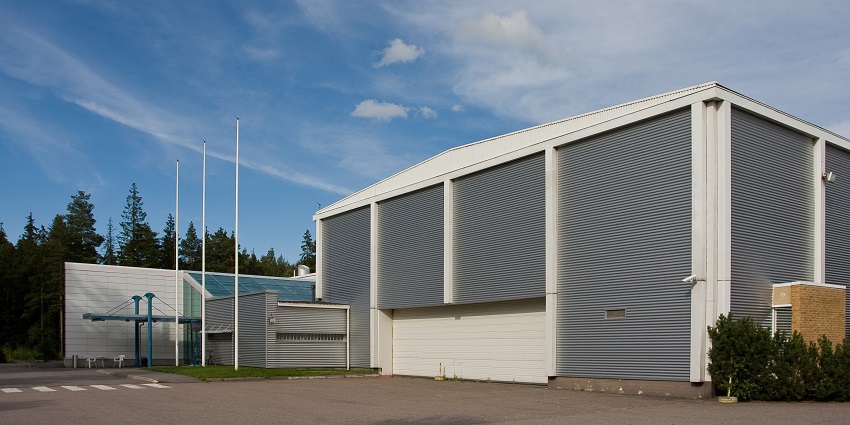
Photo: Thermos / Wikimedia Commons
The Finnish Aviation Museum in Vantaa covers Finland’s aviation history, including naval aircraft used in coastal defence. It features a collection of reconnaissance seaplanes, wartime patrol aircraft, and military aviation technology. The museum highlights Finland’s role in aerial surveillance and defence, showcasing aircraft like the VL Myrsky and various amphibious planes. Visitors can also view a range of aviation engines and pilot gear used in naval missions over the decades.
Location: Vantaa, Finland
How To Reach: Near Helsinki Airport; accessible by train and bus
Timings: 10 AM – 5 PM (Monday to Friday); 10 AM – 5 PM (Saturday and Sunday)
Entry Fee: €10 for adults (₹900); discounts available for children, students, and seniors
8. Central Naval Museum, Russia
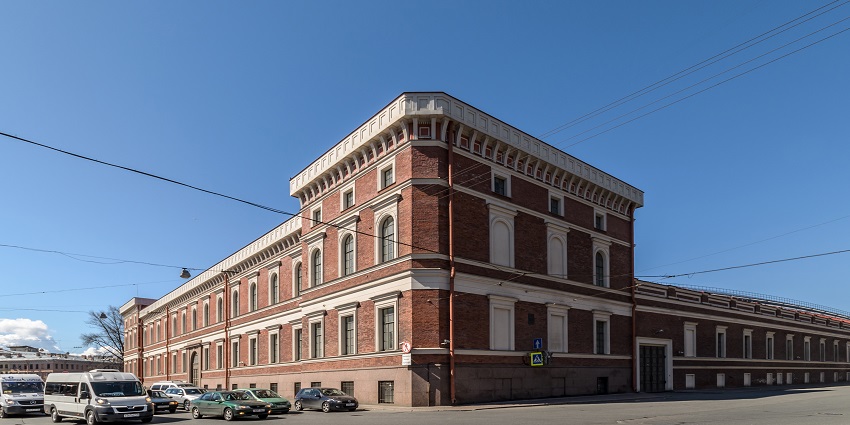
Photo: Florstein / Wikimedia Commons
The Central Naval Museum in Saint Petersburg is one of Russia’s oldest maritime museums and among the great Naval Aviation Museums in the world. It presents an extensive collection of naval aircraft models, aviation equipment, and documents that trace the history of Russian naval aviation. The exhibits include early seaplanes, Cold War-era jets, and scale models of aircraft carriers. A section dedicated to Soviet naval aviation highlights technological developments and key military operations involving air and sea power.
Location: Saint Petersburg, Russia
How To Reach: Accessible by public transport; nearest metro station is Admiralteyskaya
Timings: 11 AM – 6 PM, Wednesday to Sunday
Entry Fee: 500 RUB for adults (₹500); discounts available for students and seniors
9. Japan Maritime Self-Defence Force Kure Museum, Japan
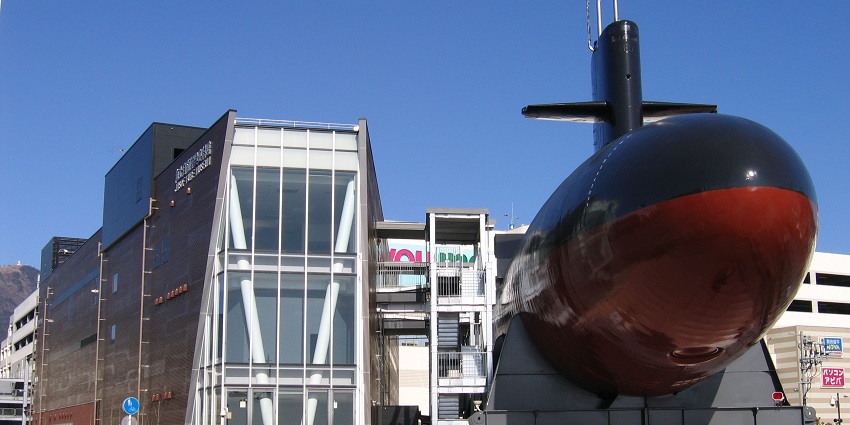
Photo: Fuji-s / Wikimedia Commons
The Kure Museum in Japan focuses on naval aviation and submarine operations. It features aircraft used in maritime patrol, carrier operations, and anti-submarine warfare. The museum offers interactive exhibits on aircraft carrier logistics, search and rescue missions, and Japan’s post-war naval aviation development. It provides a detailed look at the strategic use of aircraft in naval operations and the evolution of Japan’s Maritime Self-defence Force and is one of the best Naval Aviation Museums in the world.
Location: Kure, Hiroshima, Japan
How To Reach: Accessible by train; the nearest station is Kure
Timings: 9 AM – 5 PM daily
Entry Fee: Free
10. Philippine Air Force Aerospace Museum, Philippines

Photo: Roy Kabanlit / Wikimedia Commons
The Philippine Air Force Aerospace Museum in Manila showcases the history of Philippine military aviation, including naval aircraft used in maritime defence. The exhibits feature retired fighter planes, training aircraft, and historical records of air operations. Visitors can explore cockpit displays, aviation artifacts, and interactive learning zones. A section of the museum highlights the role of naval aviation in search and rescue missions and disaster response, reflecting the strategic importance of air power in maritime security.
Location: Manila, Philippines
How To Reach: Near Ninoy Aquino International Airport; accessible by taxi or public transport
Timings: 8 AM – 4 PM, Monday to Friday
Entry Fee: Nominal fee for entry (₹50)
Naval aviation museums preserve the rich legacy of carrier-based and maritime aircraft, highlighting their impact on military history and technology. These aviation museums provide a deep understanding of the evolution of naval aviation. Whether for aviation enthusiasts or students, these institutions ensure that the contributions of naval aviators are never forgotten. Book your trip with TripXL today and start your adventure into the thrilling world of naval aviation.
Cover Photo: Ebyabe / Wikimedia Commons


 WhatsApp
WhatsApp
 Twitter
Twitter









